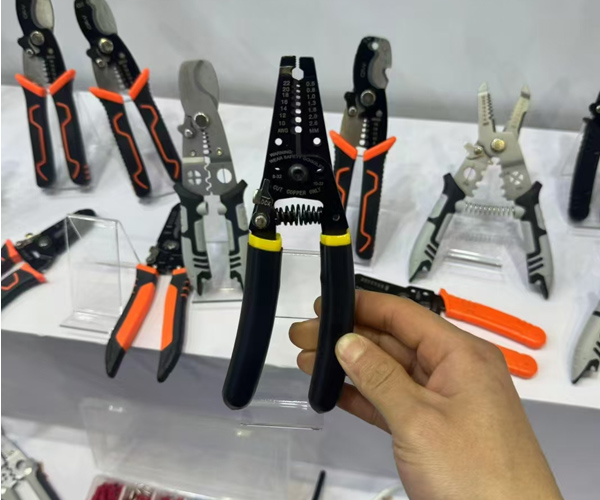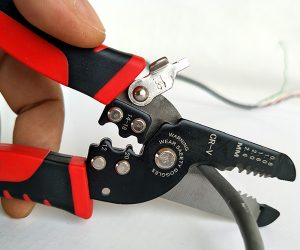Wire strippers are essential tools in the world of electrical work. Whether you’re wiring a house or repairing a car, these tools are crucial for removing insulation from electrical wires without damaging the underlying metal conductor. But what exactly does a wire stripper do? This guide will take you through everything you need to know about wire strippers, from their function to the different types available and how to use them effectively. Let’s dive right in.
1. What is a Wire Stripper and How Does It Work?
Wire strippers are simple yet powerful tools designed to strip away the insulation on electrical wires. They’re equipped with a cutting edge that removes the outer layer of the wire, exposing the metal conductor inside. It sounds straightforward, but here’s the kicker—using a wire stripper isn’t just about cutting through the insulation. It’s about doing it safely and precisely, ensuring that the wire remains undamaged and ready for a secure connection.
There are two main types of wire strippers: manual and automatic. Manual wire strippers are the most common and are typically operated by squeezing the handles, which forces the tool’s cutting jaws to grip and cut the wire. Automatic wire strippers, on the other hand, use a spring-loaded mechanism to automatically adjust to the wire’s thickness and strip the insulation without any manual effort.
The key feature that makes a wire stripper so effective is its adjustable cutting blades. These blades can be set to a specific gauge, ensuring that the insulation is removed without nicking the wire itself. This precision is vital because even the smallest cut into the wire can reduce its strength and cause electrical issues.
So, what makes these tools stand out? Well, the precision and efficiency they offer are unmatched by other methods like using a knife or scissors. And the best part? They’re designed to handle various wire gauges, making them versatile for both home and industrial use.
| Type of Wire Stripper | Function | Pros | Cons |
|---|---|---|---|
| Manual | Requires squeezing handles | Simple to use, no power needed | Requires more effort |
| Automatic | Self-adjusting spring mechanism | Quick and easy to use | More expensive |
2. Why is a Wire Stripper Important in Electrical Work?
A wire stripper isn’t just another tool in the toolkit—it’s a key player in ensuring electrical safety and efficiency. You might be wondering, why is this tool so crucial? For one, it prevents potential damage to the wire’s conductor. If you strip the wire incorrectly, the metal inside can get damaged, leading to poor connections or even short circuits.
Let’s break it down: when a wire’s insulation is removed improperly, you risk causing small, almost invisible cuts or breaks in the wire itself. These cuts can create resistance when electrical current flows through, which may result in overheating or even electrical fires. The wire stripper ensures that the insulation is removed cleanly and precisely, leaving the conductor unharmed.
Moreover, the wire stripper helps maintain the integrity of the wire’s electrical flow. Think of it like an athlete preparing for a race: the smoother the preparation, the better the performance. When you strip wires manually using unsuitable methods like a knife, you might leave behind frayed ends or uneven cuts. Wire strippers, however, provide a consistent, uniform cut that ensures reliable electrical performance.
Not only does using a wire stripper save time, but it also minimizes the risk of errors. With the right stripper, you can strip multiple wires in a fraction of the time it would take using other methods. Efficiency is key in professional and DIY electrical projects, and a wire stripper plays a significant role in achieving that.
| Benefit | Explanation |
|---|---|
| Safety | Prevents wire damage and short circuits |
| Precision | Ensures clean cuts for proper connections |
| Efficiency | Speeds up the stripping process |
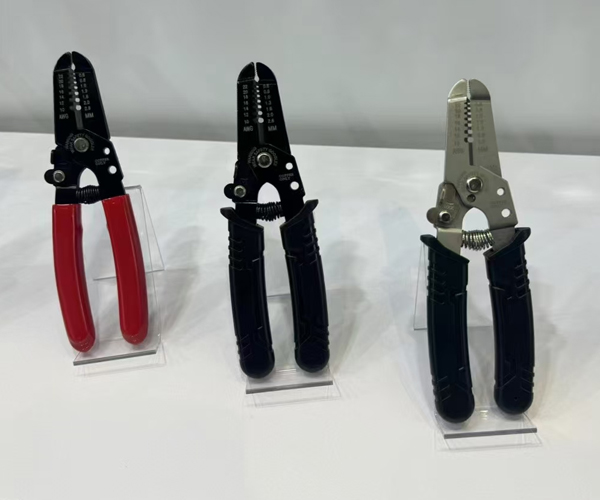
3. What Are the Different Types of Wire Strippers?
The market offers several types of wire strippers, each with its own unique features. You might be thinking, “Which one is the best for me?” Well, here’s where it gets interesting. The answer depends on your specific needs, such as the type of wire you’re working with and the scale of your project. Let’s break down the most common types.
First, there’s the manual wire stripper, which is most widely used in both home and professional settings. This type of stripper requires you to squeeze the handles manually, and it offers the most control over the wire you’re working with. If you’re dealing with standard wires and need precision, this is the tool for you.
Then, we have automatic wire strippers, which are designed to make the process faster and less physically demanding. These tools are spring-loaded, so they automatically adjust to the thickness of the wire. With one simple squeeze, the stripper will adjust to the wire’s gauge and remove the insulation. What’s the real story here? Automatic wire strippers are ideal for larger jobs where speed and efficiency are crucial.
There’s also the adjustable wire stripper, which offers the flexibility of manual strippers but with added precision. With this tool, you can adjust the stripper to fit various wire sizes, making it versatile for different tasks. Finally, we have multi-tool wire strippers, which combine wire stripping with other functions like cutting and crimping. These are perfect for anyone who needs a compact, all-in-one solution.
| Type of Wire Stripper | Best For | Advantages | Disadvantages |
|---|---|---|---|
| Manual | Precision stripping | Control and accuracy | Slower process |
| Automatic | Large-scale projects | Speed and ease of use | More expensive |
| Adjustable | Versatile tasks | Flexible and customizable | Can be bulky |
| Multi-tool | Compact tasks | All-in-one functionality | Not specialized for stripping |
4. How Do You Choose the Right Wire Stripper for Your Needs?
Choosing the right wire stripper can be daunting, especially with so many options on the market. But don’t worry, we’ve got you covered. First things first, you need to consider the type of wire you’ll be working with. For instance, if you’re working with thin, delicate wires, a tool with precise adjustments, like a manual or adjustable wire stripper, would be ideal.
Next, think about the scale of the job. If you’re undertaking a large-scale project, an automatic wire stripper might be the best choice, as it will save you time and effort. These tools are perfect for tasks that involve stripping many wires in a short period. The automatic feature also reduces the likelihood of hand fatigue.
But here’s the kicker: don’t forget about comfort. Wire strippers with ergonomically designed handles can make all the difference when working for extended periods. Look for strippers that offer a comfortable grip and are lightweight, as this will reduce strain on your hands and wrists. Additionally, consider whether you need a multi-tool stripper that can handle various tasks beyond just stripping.
Finally, consider your budget. While some high-end wire strippers may offer additional features, the basic models still do a great job at stripping wire efficiently and safely. If you’re working on smaller DIY projects, opting for a more affordable model might be the way to go.
| Consideration | Manual Wire Stripper | Automatic Wire Stripper | Adjustable Wire Stripper |
|---|---|---|---|
| Ease of Use | Moderate | Easy | Moderate |
| Speed | Slow | Fast | Moderate |
| Precision | High | Moderate | High |
| Best Use | DIY projects | Large-scale projects | Versatile applications |
5. What Are the Key Features of a High-Quality Wire Stripper?
When it comes to high-quality wire strippers, there are a few key features that separate the best from the rest. Durability is one of the most important aspects. A high-quality wire stripper should be built to last, with strong materials like steel or carbon steel used in its construction. These materials ensure that the tool won’t bend or break easily under pressure, making it a reliable choice for both professional and DIY use.
Next up, we have ergonomics. The design of the handle plays a significant role in your comfort and ability to use the tool effectively. A good wire stripper will have padded, slip-resistant handles that make gripping the tool easier, especially when working for long periods. This is particularly important for professionals who need to strip wire for hours at a time.
Another important feature is adjustability. A quality wire stripper should allow you to adjust the tool to different wire gauges, ensuring a precise and clean strip every time. If the tool doesn’t allow for this adjustment, you could end up damaging the wire or having to use a separate tool for different wire types. A good stripper will give you the flexibility to handle a range of gauges without needing multiple tools.
Finally, a high-quality wire stripper will have a built-in safety feature. Some models come with a locking mechanism to prevent the tool from accidentally opening, while others feature a guard that keeps the cutting blades away from the user’s hands. These safety features are essential to reduce the risk of injury.
| Feature | Importance | Benefits |
|---|---|---|
| Durability | High | Long-lasting, reliable |
| Ergonomics | High | Comfort during use |
| Adjustability | High | Versatility for different wires |
| Safety Features | High | Reduces risk of injury |
6. How to Use a Wire Stripper: Step-by-Step Guide
Using a wire stripper may seem straightforward, but to get the best results, it’s important to follow a few key steps. Ready for the good part? Here’s how to use a wire stripper properly.
First, you need to prepare the wire. Start by cutting the wire to the desired length using a wire cutter. Once the wire is cut, hold it with the insulation facing towards the stripper’s cutting blades. Make sure the wire is clean and free from any debris.
Next, adjust the stripper. If you’re using an adjustable wire stripper, set it to the correct gauge for your wire. For automatic wire strippers, they will adjust automatically. Now, place the wire into the stripping area of the tool, ensuring that the insulation is aligned with the cutting edges.
Now comes the fun part—stripping the wire. Apply steady pressure to the handles of the wire stripper, and the tool will grip the wire, cutting through the insulation without damaging the conductor inside. Pull the tool back, and the insulation should come off cleanly. Don’t forget to check the stripped wire to ensure it’s free from any nicks or cuts.
Finally, clean the stripper. After using the tool, make sure to clean it to remove any dust or dirt that could affect its performance in the future. If your stripper uses cutting blades, consider oiling them periodically to maintain their sharpness.
| Step | Action |
|---|---|
| 1 | Prepare the wire by cutting it to the right length |
| 2 | Adjust the stripper to the correct gauge |
| 3 | Strip the wire with steady pressure |
| 4 | Clean the stripper after use |
7. What Common Mistakes Should You Avoid When Using a Wire Stripper?
Even seasoned professionals can make mistakes when using wire strippers. Here’s a heads-up on the most common errors to avoid.
One of the most frequent mistakes is cutting the wire instead of stripping it. This usually happens when the stripper is not set correctly or the wrong tool is used. To avoid this, always ensure you’re using the right tool for the job and check the settings before use.
Another mistake is using the wrong gauge setting on the stripper. If the setting is too large or too small for the wire, the insulation won’t come off properly. It can even cause damage to the wire itself. Always double-check the gauge and ensure it’s appropriate for the wire you’re working with.
Not maintaining the tool properly is another issue. If the wire stripper isn’t cleaned regularly, dirt and grime can build up, causing the tool to work less efficiently. Be sure to clean and oil the tool after each use to ensure it stays in top condition.
Finally, some people overstrip the wire. This occurs when too much insulation is removed, leaving the conductor exposed too far, which can lead to short circuits or unreliable connections. Always remove just enough insulation to expose the conductor without compromising the wire.
| Common Mistake | Solution |
|---|---|
| Cutting wire instead of stripping | Use the correct tool and settings |
| Using the wrong gauge setting | Double-check the gauge before use |
| Not maintaining the tool | Clean and oil the tool regularly |
| Overstripping the wire | Strip only as much as needed |
8. Can a Wire Stripper Be Used for Other Tasks?
You might think that a wire stripper is limited to electrical work. Well, here’s the twist—it can do much more! Some advanced models come with additional functions, such as cutting, crimping, and even twisting wires. Multi-function wire strippers are especially useful for professionals who need a versatile tool that can handle various tasks on the job.
For example, many multi-tool wire strippers allow you to cut, strip, and crimp all with one device. These are perfect for people working in tight spaces or with limited tool kits. They combine the functionality of several tools into one, saving time and effort. What’s the real story here? Multi-function wire strippers can handle most electrical tasks without needing separate tools.
Some wire strippers can also be used in car repair or DIY projects. For instance, if you’re working on a vehicle’s electrical system or wiring a home appliance, you can use a wire stripper to expose the metal core for connections. The ability to strip insulation from a variety of wire types—whether it’s copper, aluminum, or even fiber-optic cables—adds to its versatility.
| Additional Tasks | Examples |
|---|---|
| Cutting | Cut wire cleanly |
| Crimping | Secure wire connections |
| Twisting | Twisting wires for tight connections |
| DIY Projects | Perfect for home repair tasks |
9. How Does a Wire Stripper Improve Efficiency in Electrical Projects?
Wire strippers are not just about precision; they also play a significant role in boosting efficiency. Ready for the good part? By eliminating the need for manual methods or makeshift tools, wire strippers streamline the process of stripping insulation, allowing you to get the job done faster. This is crucial in both professional electrical work and DIY projects, where time is often of the essence.
A wire stripper saves time in several ways. First, it removes insulation much faster than using a knife or other manual tools. Second, it does so in a cleaner, more consistent way, reducing the risk of mistakes that could slow down the project. Think about it—when you use a knife to strip wire, the chances of cutting too deeply into the wire or damaging it increase. That means you’ll have to go back and redo the job, wasting valuable time. With a wire stripper, these risks are minimized.
But here’s the kicker—speed isn’t the only benefit. Efficiency is also about reducing waste. With the precise cutting edges of a wire stripper, you avoid leaving behind frayed ends or small chunks of insulation that could affect the quality of the connection. This means fewer corrections and a cleaner final product. Whether you’re working on a quick DIY project or a large-scale electrical installation, wire strippers allow you to perform the task efficiently and effectively.
| Advantage | Manual Methods | Wire Strippers |
|---|---|---|
| Time Efficiency | Slower | Faster |
| Precision | Prone to errors | High accuracy |
| Waste | Higher | Minimal |
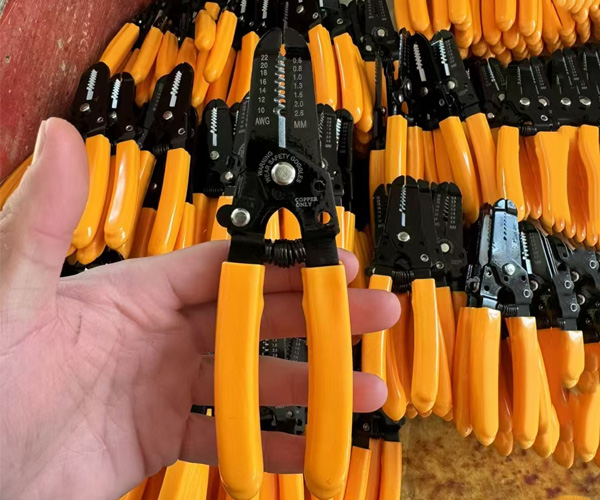
10. What Safety Considerations Should You Keep in Mind When Using a Wire Stripper?
Safety should always be a top priority when using any tool, and wire strippers are no exception. But here’s the kicker—while wire strippers are designed to make your work easier, improper use can still lead to accidents or injuries. Let’s take a look at the essential safety considerations you need to keep in mind when using this tool.
First, always wear protective gloves and safety goggles to protect yourself from sharp edges and flying debris, especially when working with thicker wires. Wire strippers may have cutting blades that can create small shards of wire or insulation that could hurt your eyes or skin. Additionally, make sure that the wire you’re stripping is not connected to any power source. Working on live wires can be incredibly dangerous, so always turn off the power and double-check that the wire is disconnected.
Another key safety aspect is handling the tool correctly. For instance, never use excessive force when using a wire stripper. The tool is designed to strip the insulation efficiently, so forcing it may break the stripper or cause an improper cut, which could lead to electrical hazards. Also, ensure that you always store your wire stripper properly when not in use. Leaving it lying around can lead to accidental injury or damage.
And don’t forget to keep the wire stripper clean and well-maintained. Tools that are not well cared for can develop faults that increase the likelihood of accidents. Periodically inspect your stripper for any signs of damage, such as loose or dull cutting blades.
| Safety Tip | Description |
|---|---|
| Wear protective gear | Gloves and goggles prevent injury |
| Turn off power | Avoid working on live wires |
| Handle with care | Don’t apply excessive force |
| Proper storage | Prevents accidental injury |
| Regular maintenance | Keeps tool in safe working condition |
11. How Do You Maintain a Wire Stripper for Longevity?
Maintaining your wire stripper is critical to ensuring its longevity and continued effectiveness. Ready for the real secret? With a few simple maintenance steps, you can extend the life of your wire stripper and keep it performing at its best for years to come. Here’s what you need to do.
First, always clean your tool after each use. Over time, wire debris and dust can build up, affecting the performance of the cutting blades. Use a soft cloth to wipe down the stripper and remove any excess dirt or insulation. If necessary, use a small brush to clean the cutting areas. This will help maintain sharpness and precision, ensuring that the stripper works properly on future projects.
Next, make sure to oil the mechanism periodically. If your wire stripper has moving parts, like the jaws or cutting blades, it’s essential to lubricate them regularly. Use a light machine oil to prevent rust and ensure smooth operation. This also helps avoid the tool becoming stiff, which could hinder its ability to strip wires properly.
But here’s the kicker—don’t just clean and oil the tool. Regularly inspect your wire stripper for wear and tear. Check the cutting blades for any signs of dullness or damage. If they’ve become too worn, it’s time to replace them. Many high-quality wire strippers allow for easy blade replacement, so this is a simple fix that can keep your tool working for a long time.
| Maintenance Task | Frequency | Benefit |
|---|---|---|
| Clean after use | Every time | Removes debris, ensures sharpness |
| Oil moving parts | Every 6 months | Prevents rust and ensures smooth operation |
| Inspect for damage | Every 6 months | Ensures long-lasting performance |
| Replace dull blades | As needed | Maintains cutting efficiency |
12. When Should You Replace Your Wire Stripper?
Like any tool, your wire stripper will eventually need replacing, even if you’ve been diligent about maintenance. But when is the right time to replace it? This is where it gets interesting. Let’s take a look at the signs that indicate it’s time for a new wire stripper.
First, check the cutting blades. If they’re showing signs of significant dullness or nicks, no amount of sharpening or oiling will restore their sharpness. This is a clear sign that it’s time to replace the stripper. Also, inspect the handles for any cracks or breakages. If the handles are compromised, you’ll have trouble maintaining a strong grip, which could lead to accidents.
Another factor to consider is how often you’re using the tool. If you’re a professional who strips wire daily, the wear and tear on your wire stripper will be much faster compared to someone who only uses it occasionally. Professionals might find that their tool needs replacing every year or two, while occasional users might get five years or more of service.
And here’s the kicker—don’t hold onto a damaged tool for too long. The longer you use a tool that’s not functioning at its best, the higher the risk of mistakes, which can lead to costly repairs or safety issues.
| Sign of Damage | Action Needed |
|---|---|
| Dull or nicked blades | Replace the stripper |
| Cracked or broken handles | Replace the stripper |
| Frequent use causing wear | Consider a replacement after 1-2 years |
| Slow or inefficient stripping | Replace or repair the tool |
13. What Are Some Recommended Wire Strippers for DIYers and Professionals?
Choosing the right wire stripper is crucial to ensuring a smooth project. But what’s the best choice for DIYers and professionals alike? Let’s break it down.
For DIYers, a basic manual wire stripper like the Irwin Vise-Grip offers great precision and affordability. This tool is simple to use, offers good control, and works well on a variety of wire sizes. It’s perfect for smaller, less frequent tasks and comes with an ergonomic handle for comfort.
For professionals, a high-end automatic wire stripper like the Klein Tools Automatic Wire Stripper is a great choice. It’s designed for heavy-duty use and features a self-adjusting mechanism that makes it easy to strip wires of various gauges quickly. What’s the real story? Professionals who work on large-scale electrical installations will appreciate the time-saving features and efficiency.
If you’re looking for something versatile, the Knipex 12 62 180 multi-tool wire stripper is an excellent choice. It combines the functionality of a stripper, cutter, and crimper all in one, making it perfect for a variety of tasks. This is ideal for anyone who needs a compact, all-in-one tool that doesn’t compromise on performance.
| Tool | Best For | Features |
|---|---|---|
| Irwin Vise-Grip | DIYers | Affordable, precise, ergonomic |
| Klein Tools Automatic Stripper | Professionals | Self-adjusting, fast stripping |
| Knipex 12 62 180 | Versatility | Combines stripping, cutting, and crimping |
14. How Do Wire Strippers Compare to Other Electrical Tools?
Wire strippers are just one of many tools you’ll need for electrical work, but how do they stack up against others? Let’s compare them to wire cutters, crimpers, and multi-tools.
Wire cutters are designed to cut through wire cleanly, but they don’t strip the insulation. While useful for trimming wire to the correct length, they won’t give you the precision stripping that wire strippers provide. If you’re working with multiple wires or need precision, wire strippers are the way to go.
Next, crimpers are used for securing connectors to wires, ensuring a tight fit for electrical connections. While crimpers don’t strip insulation, they work hand-in-hand with wire strippers. After stripping the wire, crimpers are used to attach connectors, making them a vital tool for a comprehensive electrical toolkit.
Finally, multi-tools like the Leatherman Super Tool combine several functions, including cutting, stripping, and crimping. They’re great for portability but may not be as precise or efficient as dedicated wire strippers. Multi-tools are a good choice for smaller, less demanding tasks, but for large-scale projects, you’ll want to rely on specialized wire strippers.
| Tool | Function | Best Use |
|---|---|---|
| Wire Cutters | Cutting wire | Cutting wire to length |
| Crimpers | Securing connectors | Professional electrical work |
| Multi-tools | Cutting, stripping, crimping | Smaller projects, portability |
15. What Are the Latest Innovations in Wire Stripper Design?
Wire strippers have come a long way since their invention, and they continue to evolve with the latest technological advancements. Ready for the real story? Let’s take a look at some of the innovations that are changing the game.
For instance, many newer wire strippers now come with digital gauge indicators that display the exact wire gauge for easier adjustments. This eliminates guesswork and ensures greater precision. Some models even feature built-in wire cutters that allow you to strip and cut wire in one smooth motion.
Another exciting innovation is the development of ergonomic handles with built-in vibration reduction. These handles are designed to reduce strain during long hours of use, improving comfort and performance. The latest wire strippers are also made with advanced materials that improve durability, making them more resistant to wear and tear.
The future of wire strippers also includes smart technology. Some companies are working on wire strippers that connect to apps via Bluetooth, offering users the ability to track usage, maintenance schedules, and even check the wire’s gauge remotely.
| Innovation | Description |
|---|---|
| Digital Gauge Indicators | Precise adjustments without guesswork |
| Ergonomic Handles | Reduces strain, improves comfort |
| Smart Technology | Tracks usage and maintenance via Bluetooth |
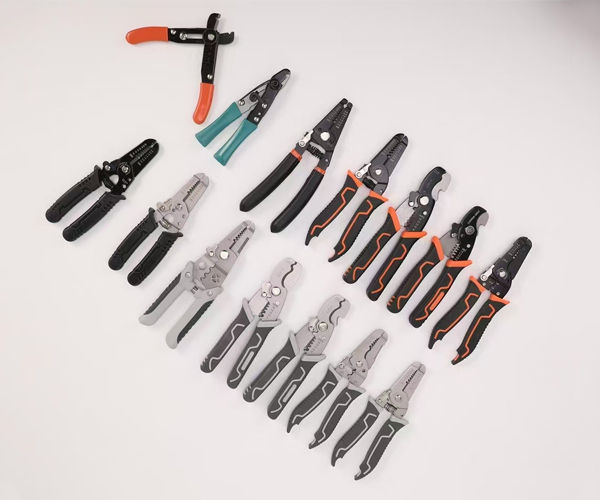
FAQ Section
Q1: What is a wire stripper?
A wire stripper is a tool used to remove the insulation from electrical wires, exposing the metal conductor for connection or splicing.
Q2: How does a wire stripper work?
A wire stripper works by clamping the wire between two cutting edges, stripping away the insulation without damaging the wire inside.
Q3: Why is it important to use a wire stripper?
Using a wire stripper ensures clean and precise cuts, preventing damage to the wire and improving the quality and safety of electrical connections.
Q4: Can wire strippers be used for different wire types?
Yes, many wire strippers are designed to handle various wire gauges and insulation types, making them versatile for different electrical tasks.
Q5: How do I maintain my wire stripper?
Regular maintenance includes cleaning, oiling the tool, checking for wear, and sharpening or replacing parts as needed to ensure long-lasting performance.
If you’re looking for high-quality, durable, and customizable wire strippers, look no further! As an OEM wire stripper factory, we provide top-notch tools designed for precision and efficiency. Whether you’re working on small DIY projects or large-scale electrical installations, we have the right wire stripper for your needs. Contact us today to discuss your requirements and get the best tools tailored to your specifications. Don’t wait—let’s get your project started with the perfect wire strippers!

